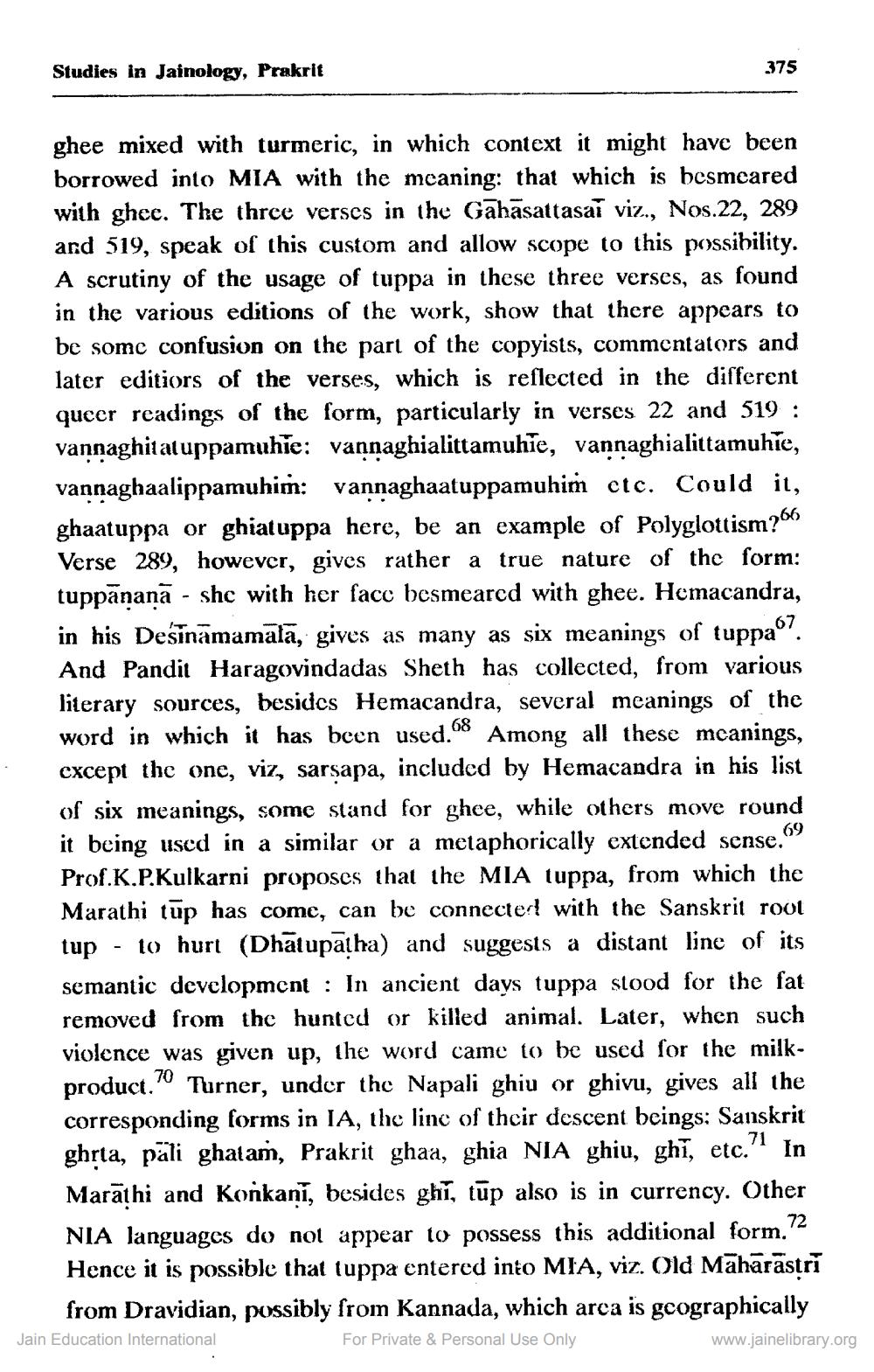________________
Studies in Jainology, Prakrit
375
ghee mixed with turmeric, in which context it might have been borrowed into MIA with the meaning: that which is besmeared with ghee. The three verses in the Gahāsattasai viz., Nos.22, 289 and 519, speak of this custom and allow scope to this possibility. A scrutiny of the usage of tuppa in these three verses, as found in the various editions of the work, show that there appears to be some confusion on the part of the copyists, commentators and later editiors of the verses, which is reflected in the different qucer readings of the form, particularly in verses 22 and 519 : vannaghitatuppamuhie: vannaghialittamuhie, vannaghialittamuhie, vannaghaalippamuhim: vannaghaatuppamuhim ctc. Could it, ghaatuppa or ghiat uppa here, be an example of Polyglottism?66 Verse 289, however, gives rather a true nature of the form: tuppānanā - shc with her face besmeared with ghee. Hemacandra, in his Desinamamala, gives as many as six meanings of tuppa®. And Pandit Haragovindadas Sheth has collected from various literary sources, besides Hemacandra, several meanings of the word in which it has been used.68 Among all these mcanings, except the one, viz, sarsapa, included by Hemacandra in his list of six meanings, some stand for ghee, while others move round it being used in a similar or a metaphorically extended sense." Prof.K.P.Kulkarni proposes that the MIA tuppa, from which the Marathi tūp has come, can be connected with the Sanskrit root tup - to hurt (Dhātupā!ha) and suggests a distant line of its semantic development : In ancient days tuppa stood for the fat removed from the hunted or killed animal. Later, when such violence was given up, the word came to be used for the milkproduct. Turner, under the Napali ghiu or ghivu, gives all the corresponding forms in IA, the line of thcir descent beings: Sanskrit ghrta, päli ghatam, Prakrit ghaa, ghia NIA ghiu, ghĩ, etc." in Marathi and Konkanī, besides ghi, tūp also is in currency. Other NIA languages do not appear to possess this additional form. 72 Hence it is possible that tuppa entered into MIA, viz. Old Māhārastri
from Dravidian, possibly from Kannada, which area is geographically Jain Education International For Private & Personal Use Only
www.jainelibrary.org




